

MEDICAL EMERGENCIES IN S.E. ASIAMedical emergencies are never pleasant, but they are even more problematic on a business trip. Here you are away from your family, doctor, specialists, and friends who could care for you. Your are in a different environment where the language, cultural norms, food, water, time, standard of cleanliness and often philosophy of care are different. Oftentimes you are not as comfortable because of the different time zones, you are having difficulty sleeping, etc. and suddenly now you need a Doctor or a Hospital. Also, as you have just arrived, everything is new to you. You don’t know who is good and who is not good and quite frankly the likelihood is you never considered getting sick or needing medical care in the first place. Chances are, therefore, you don’t know what to do or where to go.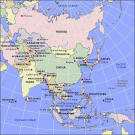
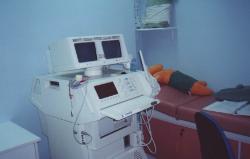
According to Travel Medicine Inc., in a report published in a recent Wall Street Journal article, the likelihood of such a medical emergency is less remote than you may think. The company which provides health information and products says that 25% of travelers will develop some kind of medical problem in a two-week span.
Southeast Asia (meaning here Thailand, Cambodia, Vietnam, Laos and Burma), as much of Asia, has developed considerably over the last 10 years. The good news is medical care is much improved in many places. Despite this, the threat of a medical emergency - be it a heart attack, stroke, a pedestrian accident caused by looking the wrong way at the wrong time, a traffic accident, a fall, a twisted or broken ankle caused by tripping on the all too common broken sidewalks, etc. is still a real and present danger that each of us face daily as we travel the region. Each of these injuries can ruin your business trip and put you in real danger if you don’t react properly. How to deal with such an event depends greatly on where you are in the region. Some good advice also is think the unthinkable now, so when the event happens you won’t be lost and can help yourself and others get you the medical care you require.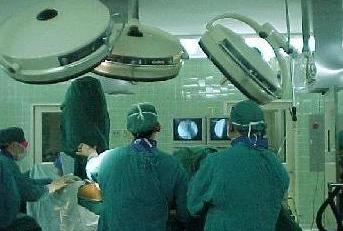
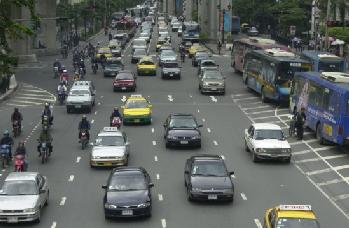
The first question, that you should ask yourself is: Am I medically prepared? Have I had the recommended immunizations and are they current? You would be surprised how many travelers never get the Typhoid and Tetanus shots, immunizations for Hepatitis or for the many other diseases that are still common throughout much of the undeveloped world. In this regard, do the research now - go to www.cdc.gov/travel and to a lesser extent to www.who.org, find the immunizations recommended for the countries you normally travel to, and get the shots needed. It doesn’t hurt much and the cost is way better than getting hospitalized or getting the illness.
The second step in being prepared is making sure you have needed medicines, copies of your eye prescription, information on your blood type, and contact information for your family doctor or other professional who has access to medical information on you. One factor I would like to stress here, especially with older visitors who may be on expensive modern drugs long-term, is the essential need to carry more than adequate supplies of their medication - many significant, items are impossible to get in many parts of SE Asia. Also be careful in your purchases. In many places, local drug stores offer medicines which are counterfeit or out-of-date and therefore may not work as you’d expect.
The next requirement is medical insurance coverage. Check your medical coverage and see whether your current policy will cover you overseas. You would be surprised how many policies don’t cover many international situations. If your current policy doesn’t provide full coverage or you have doubts on the coverage, take out a short-term medical insurance policy that covers you on the trip and that gives medical evacuation coverage. A leading company in this field that can provide both international individual and group medical insurance, travel medical insurance, executive emergency evacuation coverage and post-employment global medical insurance packages is InsuarneToGo (www.InsuranceToGo.com ). This Worldwide Insurance Agency is located in Navato, CA, USA and is headed by Phil Dougherty and William Cole, longtime insurance professionals. Other companies in this field are www.WorldTravelCenter.com, www.GlobalTravelInsurance.com, www.TravelInsured.com and www.WorldwideMedical.com. Even if your policy covers you for doctor visits, check the medical evacuation provisions thoroughly as many policies don’t cover this expense. In the event of a serious accident or illness, often the best option, once you are medically stable, is to evacuate you to a country where medical care is stronger. The cost of this can be horrendous - $50,000 or greater if you cannot be removed commercially, and even tens of thousand if you can, so make sure you have the coverage.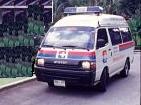
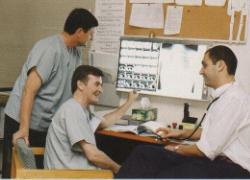
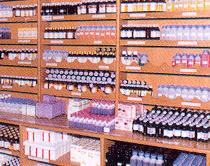
The third requirement is finding a doctor. Here a caveat is in order. Medical care in the region is constantly changing and what is good today may be very different a year from now or even less. Also, not every doctor or medical option has been vetted. The list below is just an initial list to help you make a more informed selection. In finding a doctor, there are many options. One of these is to call your Embassy and if it is during normal hours ask to speak to the Citizen Services Section in the Consulate. If calling after business hours, ask to speak to the Duty Consular Officer. Most Embassies maintain a local list of doctors who speak English, and when asked will send you the list or make suggestions in the event of an emergency. The good thing about this is that it puts your Embassy on notice of your situation and should alert them to at least check on you and offer assistance if required.
Another means to find a doctor is via the internet, assuming you are stable enough to use it. Some useful sites to check are the following:
www.iamat.org International Association of Medical Assistance to Travelers- This nearly 45 year old nonprofit organization offers its members a directory of physicians, specialists and hospitals in 125 countries. The pocket size pamphlet that you can request lists phone and fax numbers, street addresses and e-mail addresses. The organization inspects the majority of the doctors and groups listed. IAMAT physicians agree to a set fee schedule ($55 for office visits: $75 for house calls: $95 for night, Sunday and/or holiday calls.) Membership in this Association is free.
www.travel.state.gov/acs/html The U.S. Department of State website links to several lists of doctors and hospitals compiled by U.S. Embassies in the particular location. If the links are dead, please go to www.usembassy.gov and click at the country you are interested in, and then navigate to the section on U.S. Citizen Services, and on to medicine or doctors lists. For many of the Embassies, the list is not posted on the website, so American Citizen Services must be called to get the list. U.S. Embassies are quite often one of the best sources of information on local doctors since U.S. Department of State Regional Medical Officers (RMOs) visit most countries periodically and are stationed strategically around the world, for example in Bangkok, Thailand, to help ensure medical care to U.S. government employees working in the area. As such, they often evaluate local hospitals and usually will have several doctors who they know are among the best in that particular locale. They will also have views on the adequacy of local hospitals for various levels of medical care.
www.istm.org International Society of Travel Medicine and www.travelmed.com Travel Medicine, Inc. Both of these companies are more focused on helping you prepare medically for your trip with medical overviews of countries, lists of required vaccinations, lists of medical clinics providing these services, etc. Both do list medical care facilities and doctors for covered countries and both websites may be useful to you. One caveat here is that both organization's day-to-day interactions with the clinics listed is less than the local U.S. Embassy or your country’s Embassy in the particular country. Therefore, this option is only a first point of departure.
Beyond the advice above, here is some general advice on specific countries in the region. Again, please note that conditions change rapidly and you are always the best judge of your own medical situation. Please therefore consider this information as a starting point to help select the assistance you require. Runckel & Associates and www.business-in-asia.com provide the information above and below as a public service based on current information which it notes is constantly changing and must be re-verified by the user. Runckel & Associates and www.business-in-asia.com accepts no responsibility for the professional ability or reputation of these doctors clinics, hospitals or ambulances listed and suggests patients only use this article as a starting point for their research.
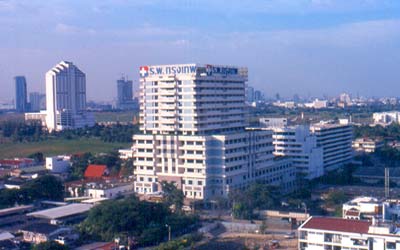
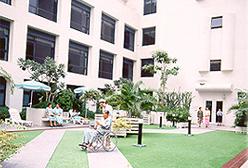
Bangkok Hospitals
Thailand is the geographical center of Southeast Asia and arguably has the strongest medical care system in the region. Thailand has a host of doctors educated abroad. Many speak English fluently and many have advanced degrees. Additionally, Thailand also differs markedly from much of the rest of Southeast Asia, in terms of the quality of nursing care. As a long experienced U.S. Embassy Regional Medical Officer with worldwide experience once remarked to me “Thailand generally has better medical care than its neighbors and the reason is the high quality of Thai nursing care. Nursing has always been a status job in Thailand, so has attracted high quality men and women to the profession there. The King’s mother was a nurse and the profession has always received respect.” This is not the case in Vietnam, and elsewhere in the region, where nursing is looked down as being at the level of a home helper or a maid.
In Thailand, one hospital stands out above the rest for the consistence of the high quality medical care, and for the breadth of coverage. This is Bumrungrad Hospital (http://www.bumrungrad.com) in Bangkok, which is located just off the Expressway near Sukhumvit Road and Soi Four in Bangkok. Other Hospitals used by foreigners in Bangkok include Samitivej Hospital (http://www.samitivej.co.th/sukum/main_sukhumvit.htm), Bangkok Hospital (http://www.bangkokhospital.com) and the Bangkok Nursing Home (http://www.bangkoknursinghome.com/index_eng.htm). Medical care there can be good with the right doctor but the standard of service is rarely as high as at Bumrungrad. Most other major cities in Thailand have reasonably good hospital and clinics, although none are as consistently well equipped or professional as Bumrungrad in Bangkok .
In Cambodia medical care is still not to the standard one would hope. There are reasonably good doctors here but in the event of anything serious, if you are still ambulatory, the best option maybe getting on a plane and flying to Bangkok.
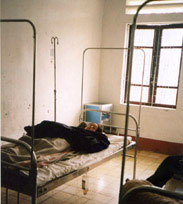
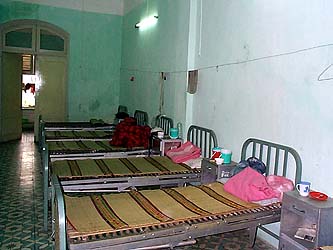
A Vietnamese government hospitalVietnam used to be a medical disaster zone. I remember less than 10 years ago standing in a hallway at Viet Duc hospital with a friend who had broken his leg, and wondering if either of us would get out alive. In Vietnam, in terms of medical care, there are only three letters you need to remember - they are K - O - T. Rafi Kot (www.DoctorKot.com), is an Israeli Doctor, who came to Vietnam nearly 20 years ago and has more medical experience in Vietnam than any other western doctor. Dr. Kot also probably has the highest energy level and one of the highest entrepreneurial levels of any doctor I have ever meant. His group currently operates the Hanoi Family Medical Practice and the Family Medical Practice in Ho Chi Minh City. Both centers provide a lot of the immigration and other work for Foreign Embassies, support foreigners living and working in Vietnam and provide medical evacuation assistance at more reasonable rates throughout the country than any other group. Both clinics have a mix of western doctors including general practitioners, and specialists in internal medicine, pediatrics, clinical psychologists and speech therapy plus access to other specialties. In Hanoi, there is currently Dr. Wauters, Dr. O’Sullivan and Dr. Azumi with two new American doctors due to arrive in September. In Ho Chi Minh City, Dr. Kot, Dr. Bernays, Dr. Hayward, Dr. Li, Dr. Pham, Dr. Wachtel and Dr. Thomson all help service the patients needs. The high number of western doctors at both clinics give them the depth found no where else in the country. This group is planning to open a third medical Family Medical Practice clinic in Da Nang, which will help them to cover the center of the country. Plans are also well advanced for a very large well-equipped Children’s Hospital in Ho Chi Minh City which should open in about two years time.
Another options in Vietnam is SOS. This company took over the former AEA practice, and still has smaller clinics in Hanoi and Ho Chi Minh. SOS uses less western (i.e. foreign) doctors and more local doctors and so this should be considered. A further option is the French-VN 200-bed hospital which just opened in Ho Chi Minh City. As this is a new center, the facility is quite good and rates are quite low. Many observers doubt, however, that quality services can be maintained at the rates being charged, so this bears watching. There also is a French-VN hospital in Hanoi that is currently closed after bearing the brunt of the SARS challenge in the country and that is likely to face continued challenges because of it. The Columbia medical clinic also operates a clinic and an in-patient hospital but again uses a high proportion of local doctors.
Outside the two main North/South cities of Hanoi/Ho Chi Minh City, good quality medical care is still hard to find. In addition to the above noted, soon to open medical clinic in Da Nang which is affiliated with the Hanoi Family Medical Center, SOS has a locally staffed mini-clinic in Vung Tau. There are local Vietnamese government run general hospitals at present in Da Nang and Nha Trang. The standard of these facilities is basic, but a patient could be stabilized there before being moved to Hanoi, Ho Chi Minh City or regional facilities in adjacent countries, such as Thailand.
According to reports by foreign Embassies, medical facilities and services in Laos are limited and do not meet Western standards. Since Medical Care in Thailand tends to be much better than in Laos and since the Laotian capital lies just on the other side of the Mekong River from Thailand, most western Embassies recommend that their nationals seek care in Thailand. The Friendship Bridge linking Vientiane, Laos to Nong Khai, Thailand is open from 6:00 a.m. to 8:00 p.m. Lao immigration officials generally will allow travelers even outside of these hours in the case of a medical emergency. AEK International Hospital (http://www.aekudon.com/aekudonE/maternityE.html) in Udorn Thani, Thailand, (tel: 66-42-342-555), has English speaking staff who are accustomed to dealing with foreign patients. The hospital is not up to the same standard as that found in Bangkok but the hospital does offer a wide variety of services. Nong Khai Wattana Hospital in Nong Khai, Thailand (tel: 66-1-833-4262) can handle most simple medical procedures. The Nong Khai Wattana Hospital ambulance has advance permission to cross the Friendship Bridge to collect patients from Vientiane and will transport paying passengers to AEK Udorn. In Vientiane, the Setthatirat Hospital ambulance (tel: 021-413-720) has the documentation necessary to take patients to Thailand.
At this writing in July 2003, Laos still has a western doctor located at the Australian Embassy. Although this doctor is in Vientiane to care for Australian diplomats and will provide care to other Embassies on an availability basis, the doctor will only see other foreigners in a life threatening emergency. Again, you best bet may be to get on a plane and go to Bungrungrad in Bangkok or depending upon the urgency, cross the Vientiane/Nong Khai Bridge and get to a Thai hospital in Udorn, Nong Khai or if less urgent, Korat.
Myanmar, also known as Burma, still remains largely in a time warp, although there are now a number of marginally better hotels there. Despite this, medical care is a great problem. A number of Embassies have doctors or nurses and it may be well to consult with them. Again, after consultation and in the event your medical condition is ambulatory but serious, it may be best to get on a plane and fly to Bangkok.
About the Author:
Christopher W. Runckel, a former senior US diplomat who served in many counties in Asia, is a graduate of the University of Oregon and Lewis and Clark Law School. He served as Deputy General Counsel of President Gerald Ford’s Presidential Clemency Board. Mr. Runckel is the principal and founder of Runckel & Associates, a Portland, Oregon based consulting company that assists businesses expand business opportunities in Asia. (www.business-in-asia.com)
Until April of 1999, Mr. Runckel was Minister-Counselor of the US Embassy in Beijing, China. Mr. Runckel lived and worked in Thailand for over six years. He was the first permanently assigned U.S. diplomat to return to Vietnam after the Vietnam War. In 1997, he was awarded the U.S. Department of States highest award for service, the Distinguished Honor Award, for his contribution to improving U.S.-Vietnam relations. Mr. Runckel is one of only two non-Ambassadors to receive this award in the 200-year history of the U.S. diplomatic service.
www.Business-in-Asia.com